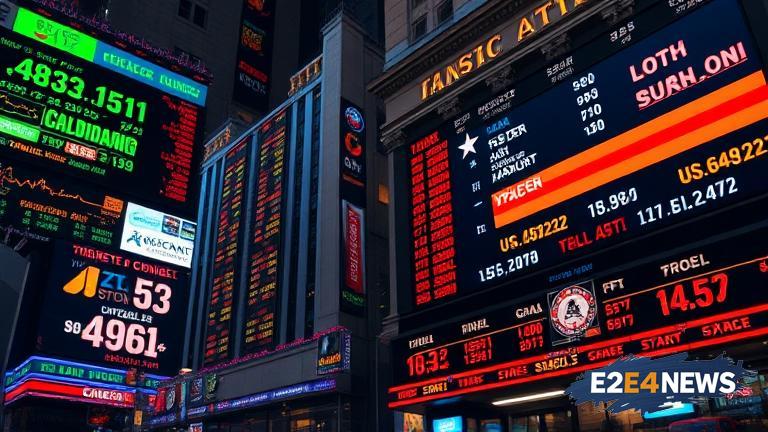The US stock market has been experiencing significant volatility in recent days, with the term premium rising to its highest level since mid-May. This increase in term premium is a sign of increased investor uncertainty and risk aversion, as investors become more cautious about the future outlook of the market. The term premium is a measure of the excess return demanded by investors for holding a long-term bond over a short-term bond, and it is an important indicator of market sentiment. As the term premium rises, it indicates that investors are becoming more risk-averse and are demanding higher returns for holding longer-term bonds. This can have a ripple effect on the entire market, leading to increased volatility and decreased investor confidence. The rise in term premium is also being driven by concerns about inflation, interest rates, and the overall health of the economy. With the Federal Reserve continuing to raise interest rates to combat inflation, investors are becoming increasingly uncertain about the future outlook of the market. The increased uncertainty is leading to a decrease in investor confidence, which is being reflected in the volatility of the stock market. The Dow Jones Industrial Average and the S&P 500 have both experienced significant declines in recent days, with the Dow falling by over 1% and the S&P 500 falling by over 1.5%. The Nasdaq Composite has also experienced a significant decline, falling by over 2% in recent days. The volatility in the market is also being driven by concerns about the upcoming earnings season, with many investors worried about the potential impact of inflation and interest rates on corporate earnings. As the earnings season approaches, investors will be closely watching the reports from major corporations to gauge the health of the economy and the potential impact of inflation and interest rates on corporate earnings. The rise in term premium is also having an impact on the bond market, with yields on long-term bonds rising to their highest levels in months. This is making it more expensive for companies to borrow money, which could have a negative impact on economic growth. Despite the volatility in the market, some investors are remaining optimistic about the future outlook of the economy, citing the strong labor market and low unemployment rate as signs of a healthy economy. However, others are more cautious, citing the potential risks of inflation and interest rates as reasons to be concerned about the future outlook of the market. Overall, the rise in term premium is a sign of increased investor uncertainty and risk aversion, and it is likely to continue to have an impact on the stock market in the coming days and weeks.
